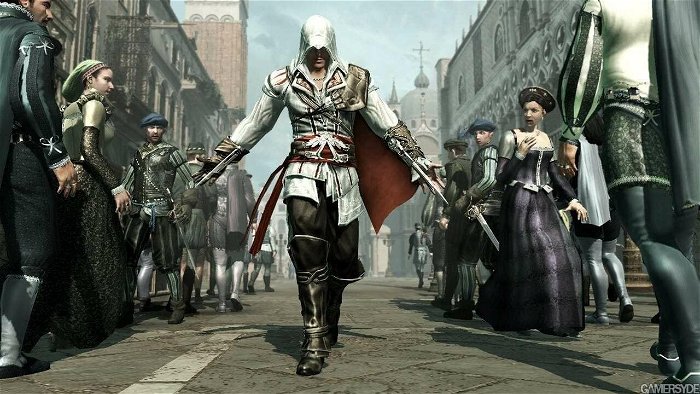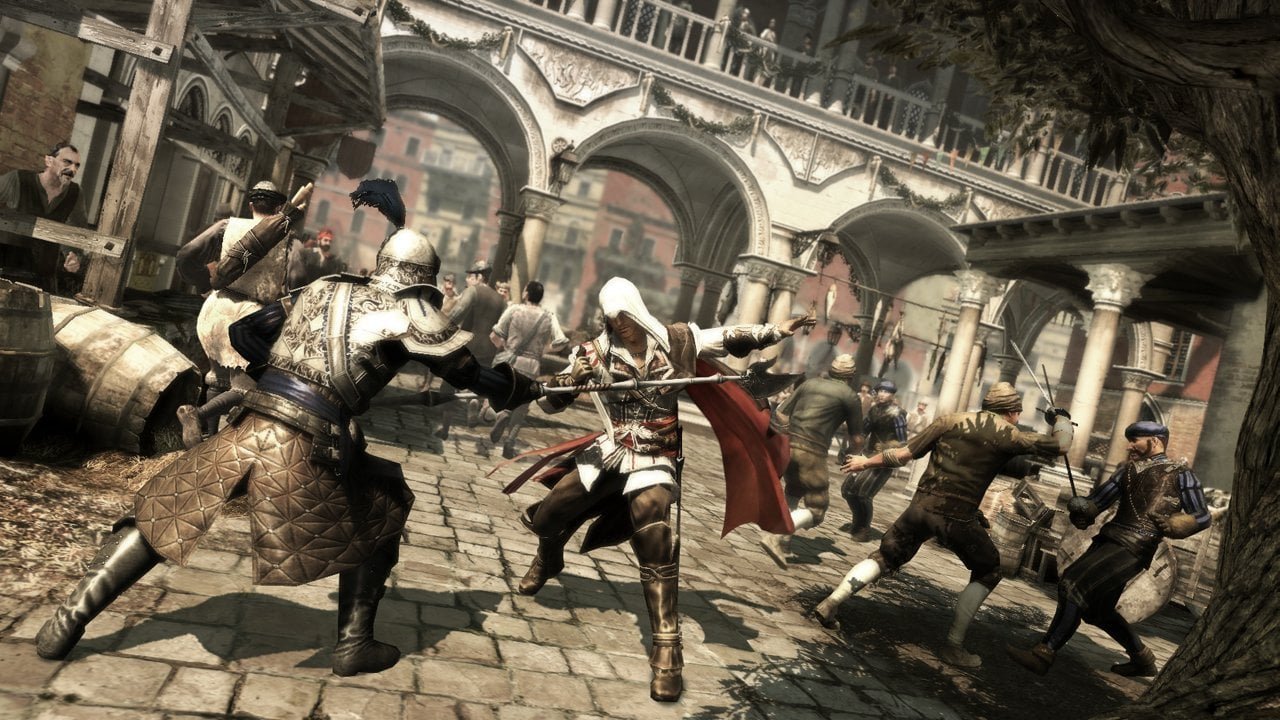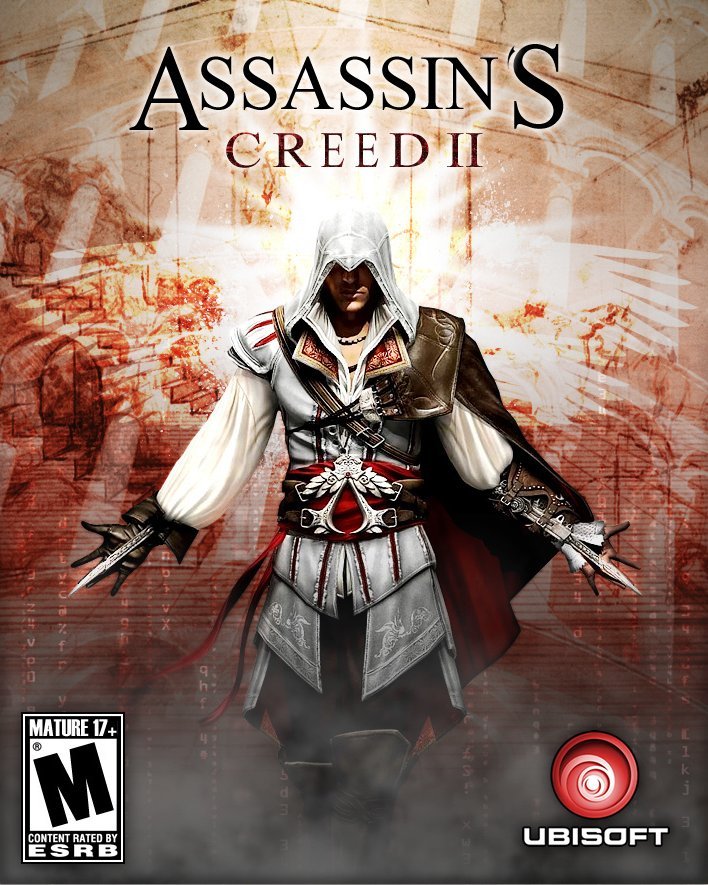The Renaissance brings to mind streets full of merchants, Leonardo da Vinci, and a new age of art and culture. Ubisoft Montreal hopes to add Ezio, a young nobleman turned assassin, to that image of this historical time period. Assassin’s Creed II picks up where 2007’s Assassin’s Creed left off, only this time the developers have moved the setting from the Crusades to 15th-century Italy, attempting to outdo the first game in every way imaginable. This is no easy feat, but the Montreal-based development team has achieved this lofty goal.
Assassin’s Creed II follows the same structure as its predecessor. Playing as Desmond, the latest in a long line of assassins, you use a machine called the Animus to travel back through the genetic memories of your ancestors to learn what they knew and uncover the truth about your destiny. Using the Animus, Desmond takes control of Ezio Auditore da Firenze, a layabout son of an Italian nobleman. It is only when Ezio’s family is framed for treason that he learns of his lineage and his destiny as an assassin. The ultimate quest of the game is to take revenge on all those who conspired against Ezio’s father and make sure they do not have a chance to carry out their catastrophic plan.

This humanization of Ezio allows Assassin’s Creed II to go far beyond the first game. More than just a story of revenge, the game becomes the story of a man finally growing up and taking responsibility for his family. He takes on the role of his father, helping his sister and mother survive after a murderous tragedy by repairing and maintaining the family home. The story is primarily an adult story that deals with serious issues such as family death, responsibility, and honour. This is not to say that it is perfect and avoids one-dimensional characters, but it goes far beyond what the first game achieved in terms of story, which adds to the immersive effect of the game.
The gameplay of Assassin’s Creed II has also been overhauled. Not only has Ubisoft fixed the flaws in the first game, such as dull, repetitive missions, not enough assassinations, and an overall lack of lustre story, but they have added many side missions and tertiary locations that push the player beyond the story and allow them to feel like they’re part of the experience for several hours of playtime. Clocking in at over 20 hours, the main story missions keep the player moving from activity to activity at a brisk pace. Many hours disappear because you can’t let go of the controller. It is so tempting to play just one more mission and then another until entire sections of the game world have been explored.
“Assassin’s Creed II improves on nearly every element of the previous title.”
The structure of Assassin’s Creed II is an open world where the player can freely roam around the Italian cities, giving access to many well-known cities such as Florence, Rome and Venice and presenting them in surprisingly accurate detail. The freedom and realism allow the player to approach the game as they see fit. However, for such an open-concept game, it manages to avoid feeling overwhelming. Everything can be done within a few minutes, and there is always a sense of accomplishment as the game keeps pushing and rewarding the player.
Additionally, the fact that you’re a noble in the game means there’s a full economic system. You help restore your family’s mansion to its former glory, and you can choose to upgrade your mansion or your own character, increasing the amount of money you receive each time. This money can be used to buy more upgrades for your villa, or to purchase weapons and accessories for your mission. This system is a welcome addition but feels lacking in depth. Although you can add buildings to the surrounding town, very few of them are accessible. This lack of interactivity makes the system feel artificial and pointless.

Another criticism is the parkour sequences that Ezio uses to navigate the city. Up and down, Ezio can climb, crawl, run, or soar. He can blend into the crowd, scale buildings, or jump from rooftop to rooftop with dexterous fluidity. This is often the game’s strongest point, but because of its automatic nature, it can also be the most frustrating. There will be times when your efforts to outrun guards or simply reach a destination will be thwarted by the game sticking you to walls or forcing you to climb when you wanted to jump. A seemingly minor issue, but with hours of gameplay ahead of you, it would be nice to have it unobstructed.
Assassin’s Creed II improves on almost every element of its predecessor. Ubisoft has created a completely immersive experience that is hard to beat for the money. With a compelling storyline and entertaining mechanics that challenge and absorb, players will easily become addicted. If you are a fan of a strong story-driven game, this should be in your game collection. If you have any doubts about how fun and challenging a game set in the Renaissance can be, rest assured that Assassin’s Creed II delivers one of the most imaginative and complete gaming experiences you can buy this year.






